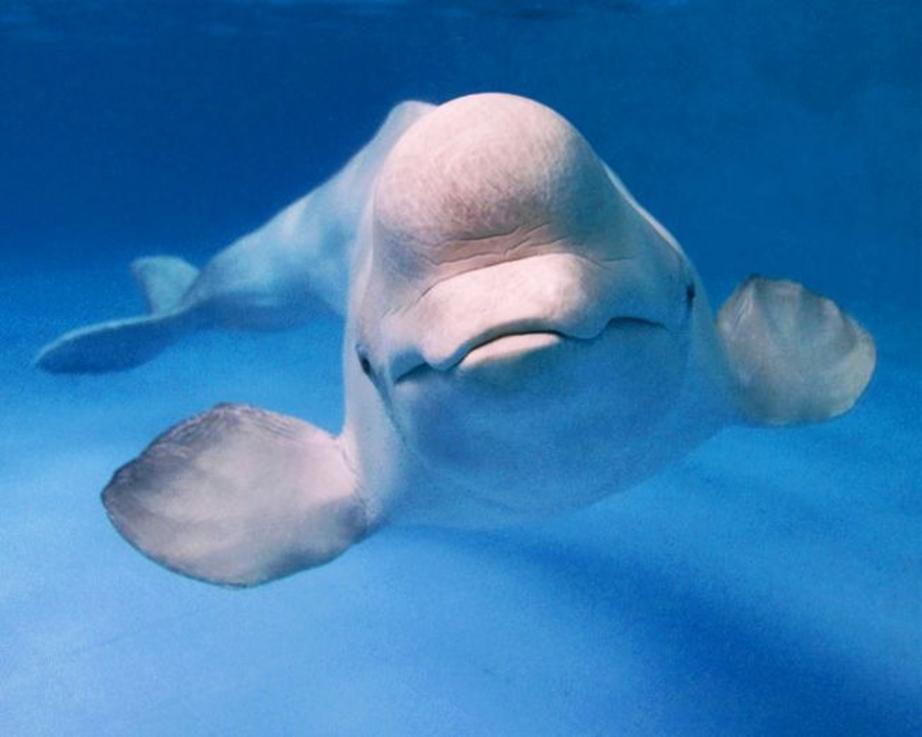Beluga whale learns dolphin language
A surprise living arrangement results in an impressive achievement.
Beluga whales are known for their wide repertoire of vocalizations; they are among the most vocal of cetaceans. But little research has been done to show just how versatile and adaptive their vocal skills truly are. So when a 4-year-old captive beluga recently had to be moved from a tank full of other belugas into a dolphin tank where she was the only beluga, scientists were eager to observe how she might adapt.
The speed at which she habituated was remarkable, and not just from a social standpoint. After just a few months, the whale seemingly managed to swap out her beluga calls for dolphin calls. It was as if she had learned how to speak dolphin, reports Discover.
Learning a new language is difficult enough, as any adult who has tried to learn a language is well-aware. But this beluga didn't just learn to speak a new beluga language; this beluga adopted the squeaks, whistles and calls of an entirely different species. Of course, it's difficult to tell the difference between mimicry and linguistic competence, but it's a fascinating test-case in interspecies communication nonetheless.
A case of culture shock
When the beluga was first moved to the Koktebel dolphinarium in Crimea, there was some understandable confusion and culture shock.
“The first appearance of the beluga in the dolphinarium caused a fright in the dolphins,” wrote Elena Panova and Alexandr Agafonov of the Russian Academy of Sciences in Moscow.
It didn't take long for the pod of bottlenose dolphins to realize the beluga was harmless, however, and friendships began to develop. In the beluga’s first days in the dolphin pool, she only gave "calls typical for her species," Panova and Agafonov write. These included squeaks, vowel-like calls, and particular two-toned sounds characteristic of beluga "contact calls," or calls that individuals use to check in with their group. But after just two months, the beluga had dropped her own calls and adopted calls that resembled the signature whistles of the three adult dolphins in her group. She also made whistles that all the dolphins shared.
After one of the adult female dolphins gave birth to a calf, the mother dolphin even allowed the calf to regularly swim alongside the beluga, seemingly signaling that the beluga had been accepted to the group.
The speed at which the beluga adapted its calls is impressive, though perhaps not entirely surprising. Belugas are known to be vocal virtuosos, and other studies have shown that they are capable of imitating sounds such as human speech, birdsong, and computer-generated noises, sometimes after only their first listen.
Something deeper than imitation seemed to be happening at the Koktebel dolphinarium, however. This beluga had to socialize herself with an entirely new species, yet she succeeded in mastering at least basic communication among them, and has been accepted into the group. Whether this represents real language acquisition is a matter for further study, but it's an encouraging sign that the species barrier might not have to be a communication barrier as well.
Maybe we, too, can one day learn to speak with our cetacean partners.
For the rest of this article please go to source link below.

